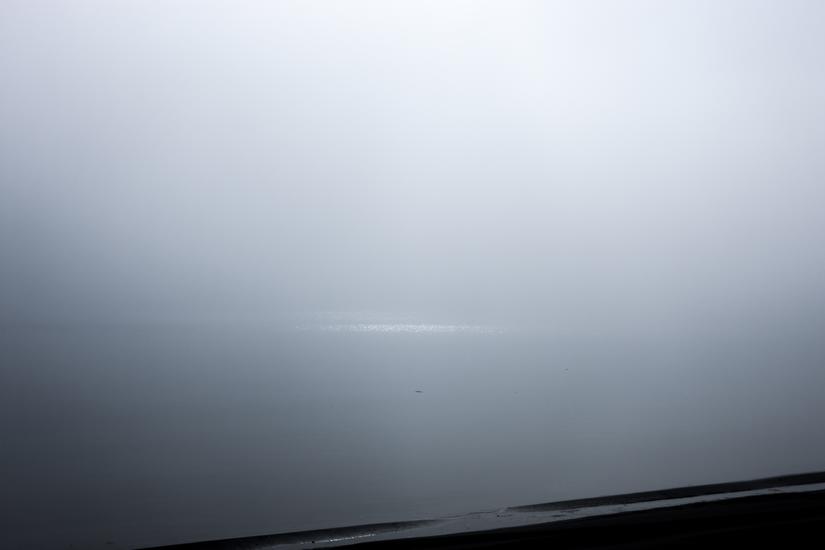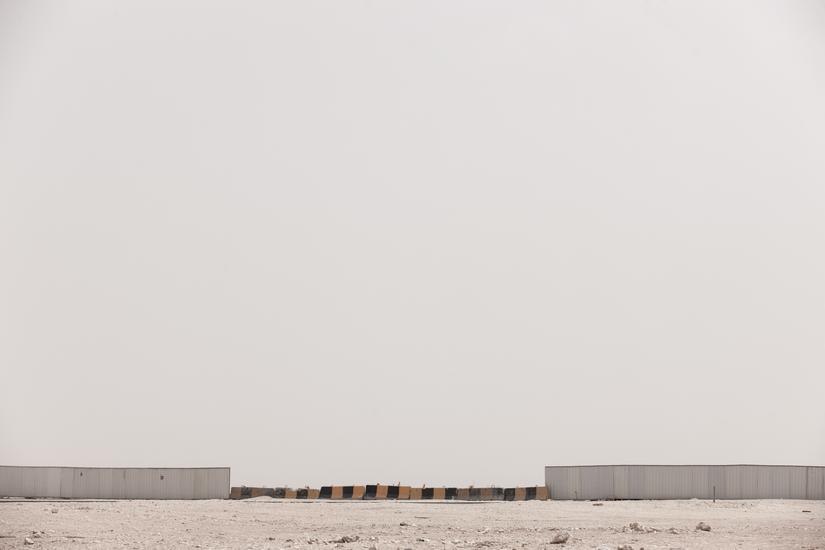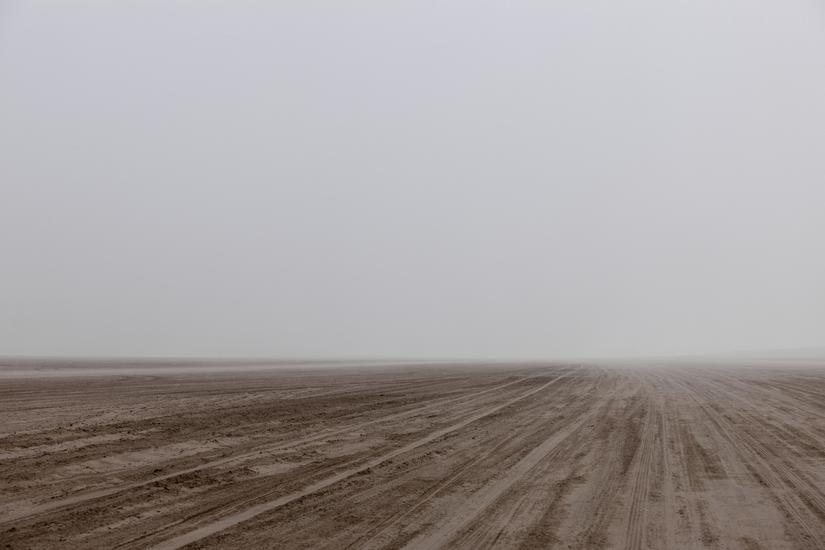The Culturist Recommends - Exhibitions in May 2016
Kadhim Haidar - Fatigued Ten Horses Converse with Nothing (The Martyr’s Epic), Oil on canvas 91 x 127 cm, 1965
Here are some new exhibitions to visit in Dubai, Abu Dhabi and Sharjah this monhth. The ones in Dubai are all in Alserkal Avenue, so you can make an evening out of it whilst the evening weather is still bearable.
Click on the title of each exhibition if you'd like to read more.
The Short Century
Museum: Sharjah Art Museum, Sharjah
Dates: 23rd April - 24th December 2016

Seif Wanly - Oil on panel, 58.5 x 71 cm, 1953
Historical periods are not defined by calendar dates, but by significant events that mark the end of one era and the beginning of the next. The 20th Century is “The Short Century,” a term popularised by the historian Eric Hobsbawm for an era that saw many of the most dramatic and extreme shifts in human history.
This era was witness to the most violent wars, the largest human migrations, the rapid expansion of cities (now the largest centres of human life), the dominance of mechanised industry, and the rapid rise, conflict, and collapse of expansive ideologies that underpinned them.
The Short Century begins in the European context with the First World War in 1914, and ends in 1991 with the fall of the Soviet Union. In the Middle East, the Century bears parallel borders: the Sykes-Picot Agreement (1916) or the fall of the Ottoman Empire (1920) marks its beginning, and the Gulf War (1990-1991) marks its conclusion. Each end demarcates stark shifts in politics, society, and cultural production.
This exhibition explores a number of artistic narratives in the Arab world, from representations of landscape and portraiture, responses to social and political developments, and the rise of nationalisms. As counterpoint alongside these expressions are the developments of abstraction – tajreed – and hurufiyya (an indigenous lettrism).
Departure by Xavier Mascaro
Gallery: Warehouse 421, Abu Dhabi
Dates: 4th May - 4th September 2016

This exhibition invites visitors to experience passage, adjustability and mobility through the woks of Spanish artist Xavier Mascaro (b. 1965, Paris). Visitors can observe possibilities and meanings through the 18-meter iron ship shown at the entrance of Warehouse421, which is suitably located in Mina Zayed, inciting parallel dialogues between the artworks and the surrounding environment.
Inside the exhibition, the 26 unique boats and documentation, along with the poems of reminiscence, survey thoughts, processes and experimentations that investigate notions of departure.
Mascaro employes a thematic that can be universal and personal. He transports visitors from ancient mythology and rampant totalities, to an icon that speaks to the historical specifics of the United Arab Emirates (UAE) community with its versatility. These relations manifest in traditional poems and songs that were instruments to convey what traveling really meant for the community, from longing to reuniting, and the essential emotions that bonded people together, and with the sea.
Magnetic Bodies: Imaging the Urban by Huda Lutfi
Gallery: The Third Line, Dubai
Dates: 25th April - 4th June 2016

Huda Lutfi, Gazing, 2015, photographs, acrylic and oil paint on wood panel, 51 x 76 x 3 cm

Huda Lutfi, Cactus Crutches, 2015, printed canvas on wood, 3 pieces, 102 x 20 x 5 cm each, 20 resin foot sculptures, dimensions variable
The exhibition, which includes photo-collage, sculpture, installation and video works, is part of an on-going exploration which cross-examines the urban sprawl of Cairo through the lens of Huda Lutfi as an artist and an historian.
The layered visuals, marked with elements such as plastic mannequins juxtaposed against blue skies and archaeological cross-sections of the megalopolis, create surreal landscapes—suspending the idiosyncrasies and impossibilities of urbanity in unchartered space and time.
The use of the doll iconography began early in Huda's career with her Found in Cairo (2006) and Arayess series (2006), which explored the effects of globalization on the production of local cultural objects and traditions. Since then, she has employed the figure of the doll repeatedly to explore the objectification and imposed modes of identity construction of the body. In the newer works, Huda explores the rich mannequin culture of Cairo and ties it to the personal and public politics that colonize a constantly evolving cityscape.
Soil Oil by Sachin Bonde
Gallery: 1x1 Gallery, Dubai
Dates: 16 May - 15th June 2016
Sachin Bonde - The World 2016 Etching, serigraphy, gold leafing and enamel paint on tin sheet, and kerosene lamp burner and kerosene beakers 224 x 305 cm
Sachin Bonde’s works over the last four years have been about the dynamics, maps and networks of movement of petrol and kerosene, and their relationship to realpolitik. In effect, he ends up mapping the world’s networks of pipelines that run underfoot, and that have been the cause of so many wars and invasions, since World War II, and especially foregrounded since 1991 to the present.
The war for fuel, is also driven by fuel needed to prop up war. Without fuel, no tankers can be mobilised or fighter planes fly. Innovations in chemical petroleum, its technology and its supply, changed the dynamic of geographic interests. To many, petroleum—the pumped black liquid from under the surface of the earth, is viewed as a resource curse, spiralling countries into war, corruption, and environmental devastation.
Along These Lines by Nada Sehnaoui
Gallery: IVDE
Dates: 16th May - 16th June 2016
Nada Sehnaoui - How Many, How Many More, 2016 Acrylics, pastels, crayons, maps, papers and newspapers on canvas 200 x 200 cm
Lebanese artist Nada Sehnaoui repeats that it all started when she stumbled across a mention of the Lebanese War Statistics published in several international newspapers in 1991 - list of numbers of people wounded, disappeared and dead during the 15-year-long Lebanese Civil War (1975-1990).
Since then, she employs painterly gestures as she repeats mundane objects and geometrical elements or materials in her installation works. Sehnaoui's labour-intensive artistic practice hinges predominantly on repetition, underlining the importance of time and process inherent to the act of remembering or forgetting. In doing so, she recalls and reiterates personal and collective acts of resilience that is symbolic of war, political instability and crisis.
Border-Lines by Jaber Al Azmeh
Gallery: Green Art Gallery, Dubai
Dates: 16th May - 2nd July 2016



Border-lines takes on an aerial perspective, exploring both the roots of global crisis and its implications. There is a line that cuts through this latest body of work. Quickly, it becomes apparent that the line is a compositional aspect and curatorial instrument of the exhibition.
Upon closer inspection, however, that equatorial line burns at the very partition between dream and reality, conscious and unconscious. In spite of the appearance of calmness and minimalism, there is a screaming silence to these images.
Surface as Interface as Surface
Gallery, Carbon 12, Dubai
Dates: 16th May - 15th July
Left: Gregor Hildebrandt - Dirty, video tape on canvas, 30 x 30.5 x 2.5 cm (2014) Right: Gregor Hildebrandt - Dancing, video tape on canvas, 30 x 30.5 x 2.5 cm (2014)
The contemporary tendency toward abstraction fuels our need for the concrete: as our world becomes increasingly complex each day, our desire for a sensual experience grows. When we think of interfaces, we think of a way to access digital ephemera through screens and simulacra. But isn’t every surface an interface and every interface a surface? With Surface as Interface as Surface, Carbon 12 puts the materiality back on the map and chops the meta from the physics. New works from the gallery’s artists André Butzer, Bernhard Buhmann and Ralf Ziervogel are shown together for the first time in Dubai along with works by Gregor Hildebrandt, Peles Empire, Jessica Mein, Thomas Arnolds and Mohammed Kazem.
The range of material in the presented works breaks the frame of our classical understanding of two-dimensional practices: Hildebrandt glues video-tapes directly upon the surface in his works while Kazem scratches soundwaves directly on to paper. Both artists create synaesthetic investigations into the analogue, capturing echoes from the past and preserving their memories for a possible future.
Mein uses the physical aspects of surface and structure to make her abstract images. Meanwhile, Empire uses literary sources to map out urban territory—the similarity in their works lies in the quality of visualizing complex connections.
The mundanity of putting paint on canvas becomes a literal material matter in the works of Buhmann, Ziervogel, Butzer and Arnolds. The moment where the material begins to speak a voice on its own oscillates between the point of total abstraction and material reality.
Seen through this lens, every picture is an image and every image is intentional. Every material has a function and every function incorporates ideology: the surface becomes the interface; the interface becomes the surface. Surface as Interface as Surface marks a turn in the contemporary approach toward material.
New Works by Fahd Burki
Gallery: Grey Noise Gallery, Dubai
Dates: 16th May - 30th July 2016

Left: Dawn, 2015, acrylics and pencil on paper, 76 x 56 cm Right: Noon, 2015, acrylics and pencil on paper, 76 x 56 cm
Fahd Burki’s practice is concerned with a vocabulary of symbols, forms and compositions that have, over the years, moved between non-representational and figurative. His work has evolved through subtle variations and reductions; moving towards greater abstraction, the new series of works mark a distinct shift in his practice.
Without predefined ideas, Burki's creative process is intuitively marked with repetition, symmetry and intervals. The compositions are playfully crafted with lines, geometric forms, grids and blank spaces.
The new work brings together the Lahore-based artist’s explorations that evoke a sense of transience and permeability - the works tend to dwell between the personal and the mystical.
Observing the Ritual
Gallery: Gulf Photo Plus
Dates: 16th May - 27th August 2016

This exhibition unites three distinct series by three distinct photographers - Hidden Islam by Nicoló Degiorgis, Prayer Rooms by Ammar Al Attar and Iftar by Natalie Naccache, to explore the spaces in which the rituals fundamental to Muslim culture occur.
From communal prayer held in a secret mosque to the breaking of the fast in a family home during Ramadan, the exhibition’s contributing photographers shed light on the most intimate moments of life for practicing Muslims.
Links to the previous months:
The Culturist Recommends - Exhibitions in January 2016
The Culturist Recommends - Exhibitions in February 2016




